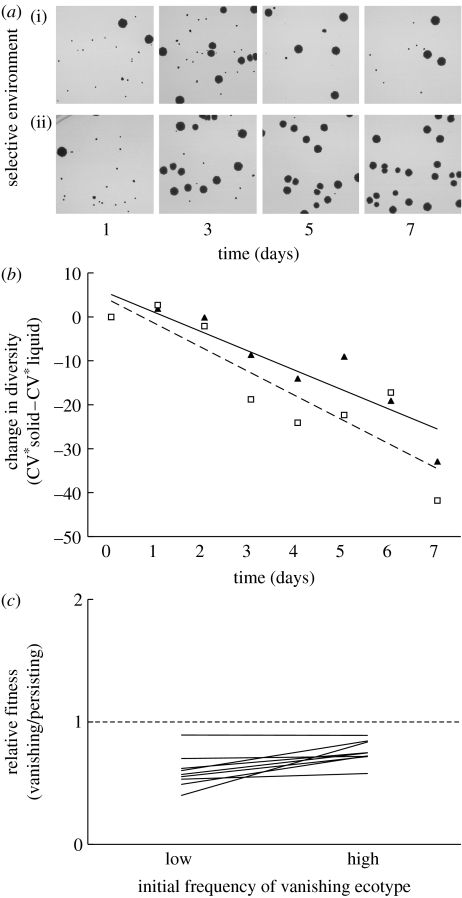Figure 2.
Diversity declined in spatially structured environments. (a) Diversity in colony size of one population (ara- population 5) transferred (i) in liquid (DM+Glu) or (ii) in spatially structured medium (DM+Glu+Agar) plated on indicator plates (TA). By day 7, no small colonies were present in the population transferred in spatially structured medium, while small colonies persisted throughout the experiment in populations transferred in liquid medium. The presence of small colonies in the spatially structured populations by day 3 indicated that the total diversity was captured in the transfer regime used for this experiment. (b) Diversity declined after shifting from a well-mixed to a spatially structured environment both at normal transfer densities (triangles and solid line) and at 10-fold lower transfer densities (squares and dashed line). Change in diversity was calculated as the difference in diversity in solid and in liquid media (points are average of two measurements for nine populations at normal transfer density and the average of nine populations at 10-fold lower transfer density). Each line was determined by regression on independently collected data. (c) Stabilizing frequency dependence between the persisting and the vanishing ecotype did not occur in the spatially structured environment. Relative fitness of the vanishing ecotype was low, regardless of its initial frequency. None of the lines connecting the fitness at high and low initial frequency crossed the equal fitness line (dashed line).

